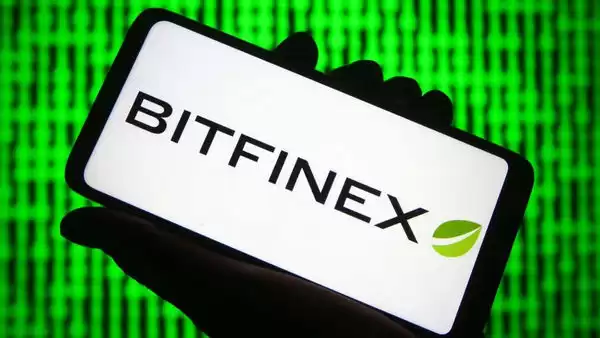-
 Bitcoin
Bitcoin $113600
-0.89% -
 Ethereum
Ethereum $3589
-2.33% -
 XRP
XRP $2.932
-4.03% -
 Tether USDt
Tether USDt $1.000
0.03% -
 BNB
BNB $749.6
-1.98% -
 Solana
Solana $163.0
-3.40% -
 USDC
USDC $1.000
0.02% -
 TRON
TRON $0.3322
-0.70% -
 Dogecoin
Dogecoin $0.1980
-4.93% -
 Cardano
Cardano $0.7186
-4.54% -
 Hyperliquid
Hyperliquid $37.47
-2.40% -
 Stellar
Stellar $0.3903
-5.01% -
 Sui
Sui $3.390
-4.44% -
 Bitcoin Cash
Bitcoin Cash $554.6
-3.01% -
 Chainlink
Chainlink $16.20
-4.35% -
 Hedera
Hedera $0.2354
-5.05% -
 Ethena USDe
Ethena USDe $1.001
0.01% -
 Avalanche
Avalanche $21.79
-4.49% -
 Litecoin
Litecoin $118.6
-2.39% -
 UNUS SED LEO
UNUS SED LEO $9.003
0.58% -
 Toncoin
Toncoin $3.166
-6.57% -
 Shiba Inu
Shiba Inu $0.00001200
-3.59% -
 Uniswap
Uniswap $9.486
-4.51% -
 Polkadot
Polkadot $3.596
-2.54% -
 Dai
Dai $1.000
0.01% -
 Monero
Monero $289.7
-3.54% -
 Bitget Token
Bitget Token $4.271
-2.32% -
 Cronos
Cronos $0.1386
-0.92% -
 Pepe
Pepe $0.00001007
-5.23% -
 Aave
Aave $253.1
-4.66%
Bitfinex leverage tutorial
Leveraged trading on Bitfinex amps up profit potential but demands cautious risk management to avoid margin calls and potential liquidation due to inflated losses.
Nov 11, 2024 at 03:18 am

Bitfinex Leverage Tutorial: A Comprehensive Guide to Leveraged Trading
Leveraged trading on Bitfinex can be a powerful tool for experienced traders looking to amplify their profits. However, it is crucial to understand the risks involved before engaging in leveraged trading. This tutorial will provide a comprehensive guide to leveraging trading on Bitfinex, covering the following topics:
- Understanding Leveraged Trading
- Leverage Levels on Bitfinex
- Benefits and Risks of Leveraged Trading
- Choosing the Right Leverage
- Opening a Leveraged Position
- Managing Leveraged Positions
- Closing a Leveraged Position
1. Understanding Leveraged Trading
Leveraged trading involves borrowing funds from a broker to increase the size of your trades. For example, if you have a $1,000 account and use 10x leverage, you can trade with $10,000 worth of assets. This amplifies both your potential profits and losses.
2. Leverage Levels on Bitfinex
Bitfinex offers leverage levels up to 10x for most cryptocurrencies. The specific leverage levels available for each asset vary depending on the market conditions and the trader's account balance.
3. Benefits and Risks of Leveraged Trading
Benefits:
- Increased profit potential: Leverage can significantly amplify your profits by allowing you to control a larger position size.
- Flexibility: Leveraged trading provides more flexibility in terms of position sizing and risk management.
- Potential for hedging: Leverage can be used to hedge against losses in other positions.
Risks:
- Increased risk of losses: Leverage amplifies both your profits and losses, so it is crucial to manage your risk carefully.
- Margin calls: If the value of your position falls below a certain level (the margin call level), Bitfinex may require you to add more funds to your account.
- Liquidation: If you fail to meet a margin call, your position may be liquidated, resulting in significant losses.
4. Choosing the Right Leverage
Choosing the right leverage level is crucial for successful leveraged trading. Here are some factors to consider:
- Experience and risk tolerance: Leverage should only be used by experienced traders who fully understand the risks involved.
- Market volatility: The more volatile the market, the lower the leverage you should use.
- Size and liquidity of your position: Ensure that you have sufficient funds to cover your position and any potential losses.
5. Opening a Leveraged Position
To open a leveraged position on Bitfinex, follow these steps:
- Select the asset you want to trade.
- Choose the leverage level you want to use.
- Enter the amount of the asset you want to buy or sell.
- Click the "trade" button.
6. Managing Leveraged Positions
Once you have opened a leveraged position, it is crucial to manage it carefully to minimize your risk. Here are some tips:
- Monitor your position: Keep a close eye on the market and your position's performance.
- Set stop-loss orders: Place stop-loss orders to limit your potential losses if the market moves against you.
- Add or remove leverage: Adjust your leverage level if necessary to manage your risk exposure.
7. Closing a Leveraged Position
To close a leveraged position, reverse the steps you took to open it. Follow these steps:
- Select the open position you want to close.
- Choose the action "close."
- Enter the amount of the asset you want to sell or buy back.
- Click the "trade" button.
Disclaimer:info@kdj.com
The information provided is not trading advice. kdj.com does not assume any responsibility for any investments made based on the information provided in this article. Cryptocurrencies are highly volatile and it is highly recommended that you invest with caution after thorough research!
If you believe that the content used on this website infringes your copyright, please contact us immediately (info@kdj.com) and we will delete it promptly.
- DeriW Mainnet: Zero Gas Fees Revolutionize On-Chain Derivatives Trading
- 2025-08-06 10:30:11
- IOTA, Cloud Mining, and Eco-Friendly Crypto: A New York Investor's Take
- 2025-08-06 10:30:11
- Kaspa (KAS) Price Prediction: August 6 - Will It Break Free?
- 2025-08-06 10:50:12
- Meme Coin Mania: Arctic Pablo's Token Burn Ignites Presale Frenzy
- 2025-08-06 10:50:12
- Pi Network, Holders, and Market Turbulence: Navigating the Crypto Storm
- 2025-08-06 10:55:12
- XRP, DOGE, and the Altcoin Darling Dilemma: Where's the Alpha?
- 2025-08-06 08:30:11
Related knowledge

Why is my Bitstamp futures position being liquidated?
Jul 23,2025 at 11:08am
Understanding Futures Liquidation on BitstampFutures trading on Bitstamp involves borrowing funds to open leveraged positions, which amplifies both po...

How to report Bitstamp futures for taxes?
Jul 30,2025 at 08:35am
Understanding Bitstamp Futures and Taxable EventsWhen trading Bitstamp futures, it’s essential to recognize that these financial instruments are treat...

Does Bitstamp offer inverse contracts?
Jul 23,2025 at 01:28pm
Understanding Inverse Contracts in Cryptocurrency TradingIn the realm of cryptocurrency derivatives, inverse contracts are a specific type of futures ...

What is the difference between futures and perpetuals on Bitstamp?
Jul 27,2025 at 05:08am
Understanding Futures Contracts on BitstampFutures contracts on Bitstamp are financial derivatives that allow traders to speculate on the future price...

How to find your Bitstamp futures trade history?
Jul 23,2025 at 08:07am
Understanding Bitstamp and Futures Trading AvailabilityAs of the current state of Bitstamp’s service offerings, it is critical to clarify that Bitstam...

Can I use a trailing stop on Bitstamp futures?
Jul 23,2025 at 01:42pm
Understanding Trailing Stops in Cryptocurrency TradingA trailing stop is a dynamic type of stop-loss order that adjusts automatically as the price of ...

Why is my Bitstamp futures position being liquidated?
Jul 23,2025 at 11:08am
Understanding Futures Liquidation on BitstampFutures trading on Bitstamp involves borrowing funds to open leveraged positions, which amplifies both po...

How to report Bitstamp futures for taxes?
Jul 30,2025 at 08:35am
Understanding Bitstamp Futures and Taxable EventsWhen trading Bitstamp futures, it’s essential to recognize that these financial instruments are treat...

Does Bitstamp offer inverse contracts?
Jul 23,2025 at 01:28pm
Understanding Inverse Contracts in Cryptocurrency TradingIn the realm of cryptocurrency derivatives, inverse contracts are a specific type of futures ...

What is the difference between futures and perpetuals on Bitstamp?
Jul 27,2025 at 05:08am
Understanding Futures Contracts on BitstampFutures contracts on Bitstamp are financial derivatives that allow traders to speculate on the future price...

How to find your Bitstamp futures trade history?
Jul 23,2025 at 08:07am
Understanding Bitstamp and Futures Trading AvailabilityAs of the current state of Bitstamp’s service offerings, it is critical to clarify that Bitstam...

Can I use a trailing stop on Bitstamp futures?
Jul 23,2025 at 01:42pm
Understanding Trailing Stops in Cryptocurrency TradingA trailing stop is a dynamic type of stop-loss order that adjusts automatically as the price of ...
See all articles

























































































